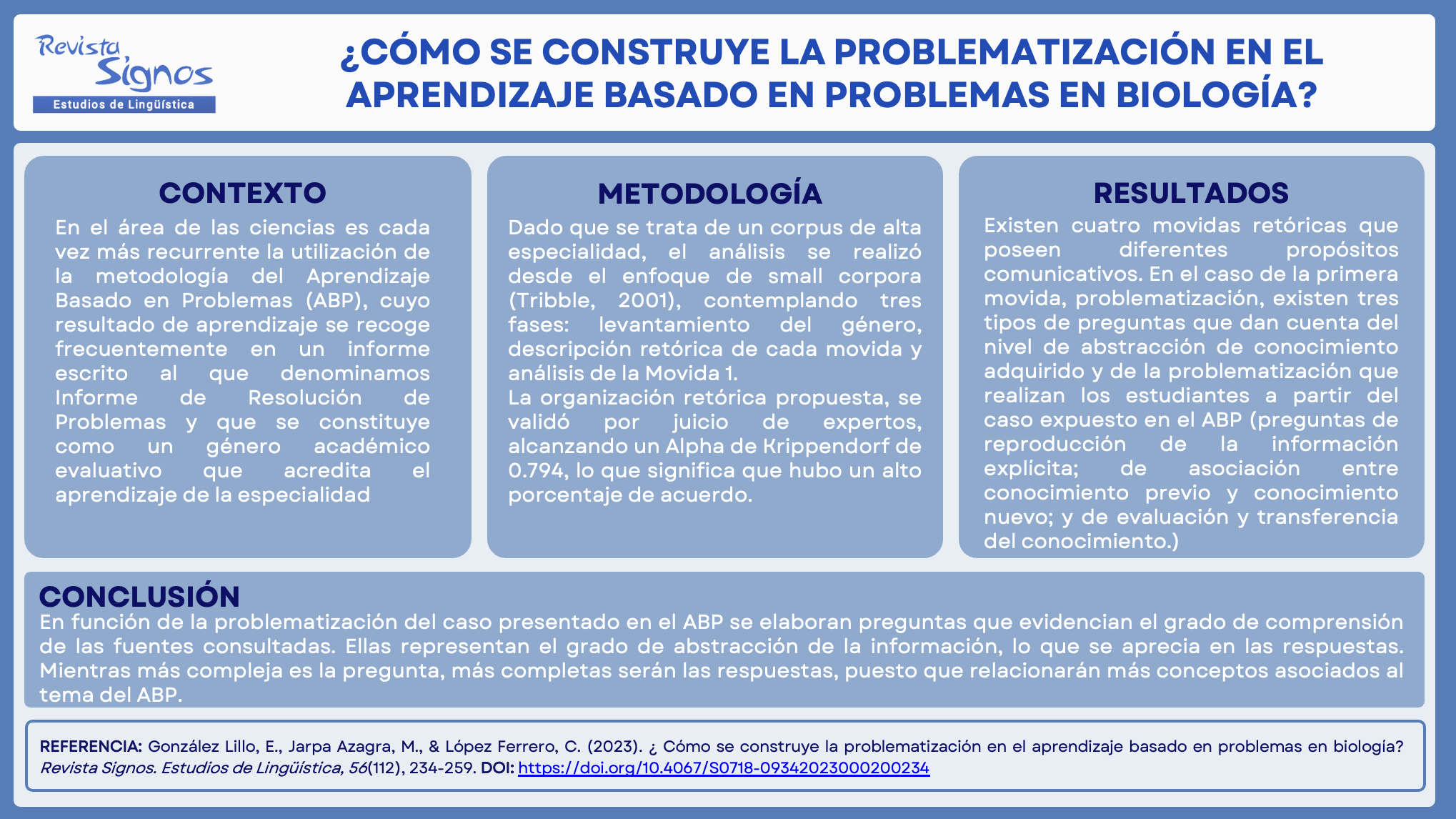How is Problematization Constructed in Problem-Based in Biology?
Keywords:
Problem-based learning, problem-solving report, evaluative genres, taxonomies of learning, levels of reading comprehensionAbstract
In the science field, the use of Problem-Based Learning (PBL) methodology is becoming increasingly common, and the learning outcome is often captured in a written report. In our study, we consider the problem-solving report a formative-evaluative genre that has a dual purpose: to be a learning activity and to be an evaluation product. From the genre theory (Swales, 1990, 2004), we describe the rhetorical organization of this genre by means of a corpus of written texts in the area of biology and, subsequently, we analyze the first move in depth, considering, on the one hand, the levels of reading comprehension (Cassany, 2006; Gordillo & Flórez, 2009; Guevara, Cárdenas & Reyes, 2015) and, on the other, the taxonomies of learning (Bloom et al. (1956) reformulated by Anderson & Krathwohl, 2001; Biggs & Collis, 1982, 1989). The results indicate that there are four rhetorical moves that possess different communicative purposes. In the case of the first move, problematization, there are three types of questions that account for the level of abstraction of acquired knowledge and the problematization that the students carry out based on the case presented in the PBL. In this move, transactional interrogative statements predominate (Escandell, 2013), using simple discursive resources such as definition, description, classification, or enumeration. Since the genre has not been described before, it is necessary to deconstruct it and model it in order to understand its scope in disciplinary training in the field of science.

Downloads
Published
How to Cite
Issue
Section
License
Copyright (c) 2023 Revista Signos. Estudios de Lingüística

This work is licensed under a Creative Commons Attribution 4.0 International License.
Copyright agreement:
Authors who have a manuscript accepted for publication in this journal agree to the following terms:
Authors will retain their copyright and grant the journal the right of first publication of their work by means of this copyright agreement document, which is subject to the Creative Commons Acknowledgment License that allows third parties to share the work provided that its author and first publication in this journal are indicated.
Authors may adopt other non-exclusive license agreements for distribution of the published version of the work (e.g., depositing it in an institutional repository or publishing it in a monographic volume) as long as the initial publication in this journal is indicated.
Authors are allowed and encouraged to disseminate their work via the internet (e.g., in institutional publications or on their website) before and during the submission process, which can lead to interesting exchanges and increase citations of the published work (read more here).


